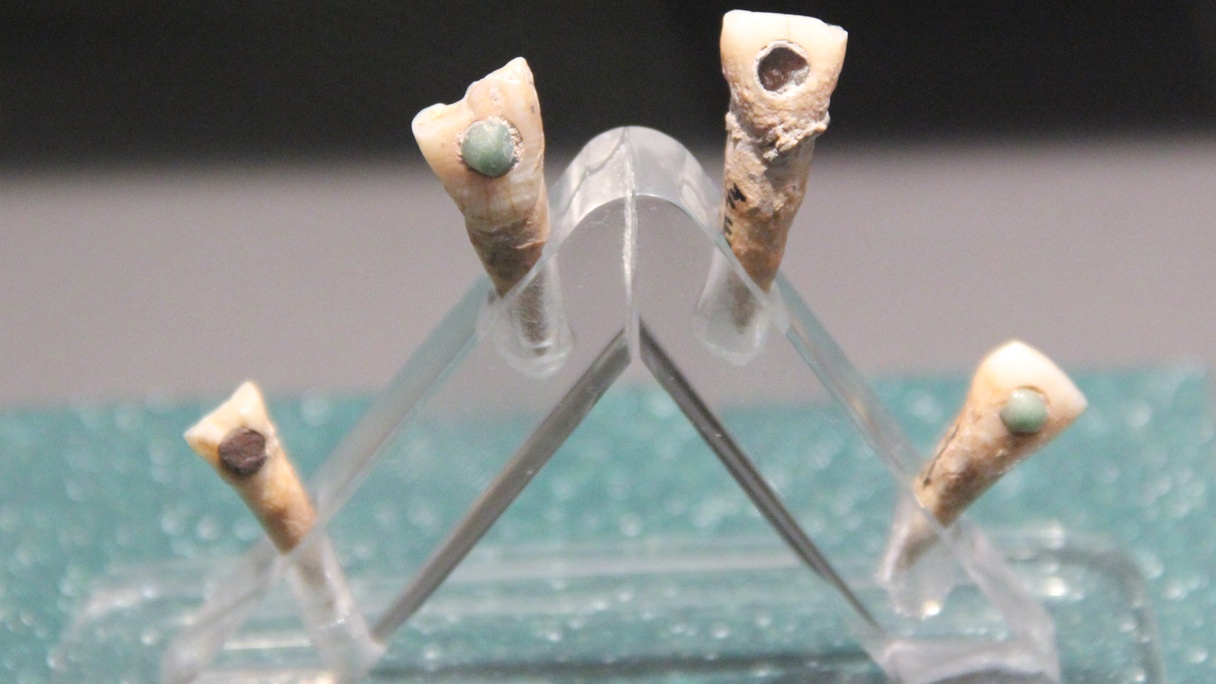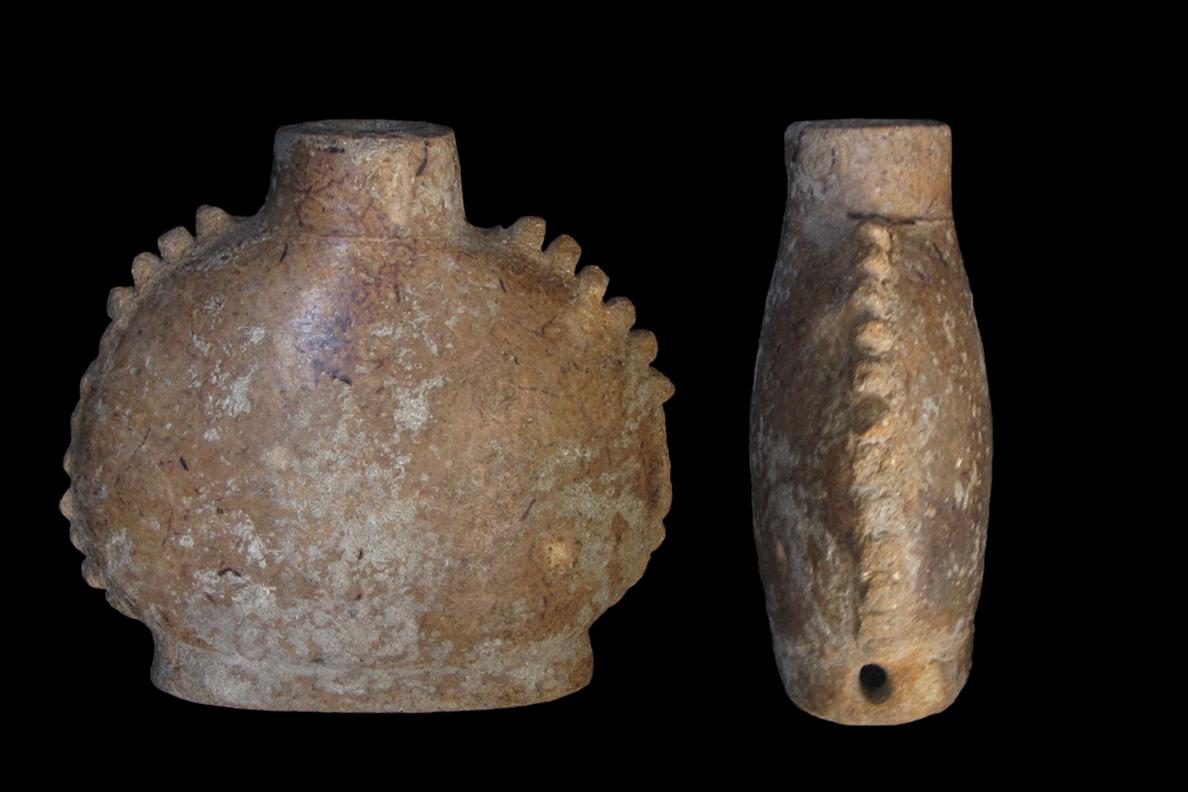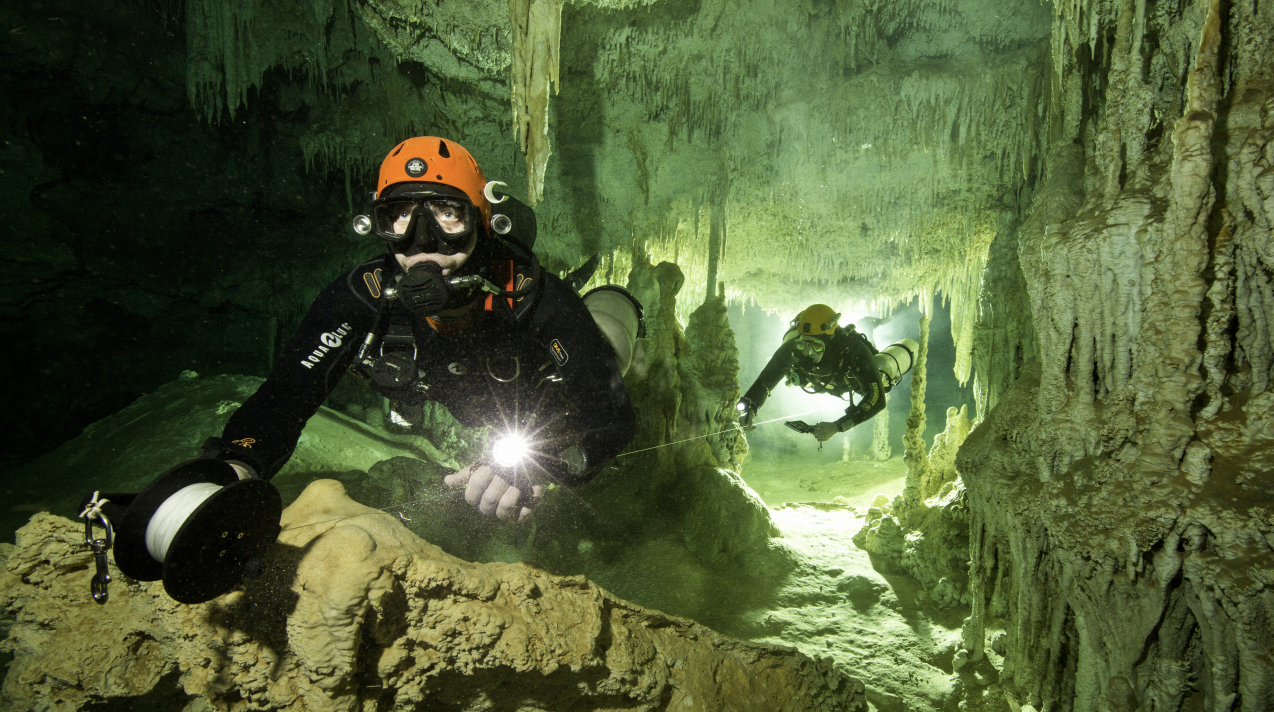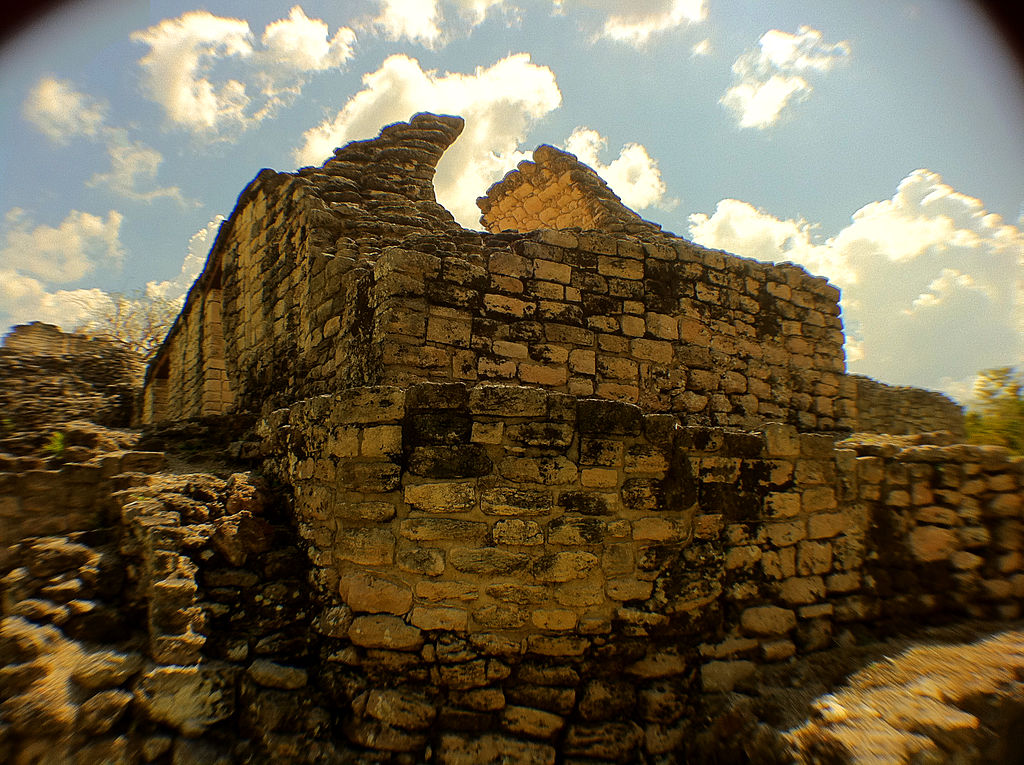Ancient Maya installed gemstones in their teeth. It wasn’t just fashion.

- The Maya once installed gemstones in their teeth as a fashion statement that might also have had medicinal benefits.
- The dental procedure appears to have been surprisingly common, and its practitioners managed to do it without killing the patient.
- A recent study suggests elements of the cement used to hold the stone in place may have kept infection and cavities at bay.
The ancient Maya civilization has long intrigued the modern world because of its impressive cities and temples, its invention of the concept of zero, and its sudden and mysterious collapse. But among the lesser-known aspects of Maya society was a tendency for citizens to decorate their teeth with gemstones directly inlaid into the enamel.
A study recently published in the Journal of Archaeological Science: Reports found that this procedure may have been more common than previously thought, and that the Maya were surprisingly skilled at the dental procedure.
More than just bling
A thousand years before Pierre Fauchard began his work on replacing lost teeth with ivory dentures in France or the introduction of grillz into parts of popular culture, the Maya were both taking excellent care of their teeth through regular cleaning and filling their teeth into pointed shapes for what were long presumed to be ritual reasons. They were also placing semiprecious stones into their teeth as seen below:

While these samples can seem a little dull, a wide variety of gems have been found in teeth from burial sites, including jadeite, iron pyrites, hematite, turquoise, quartz, serpentine, and cinnabar. The visual effect would have been vibrant during the lifetime of the person who had the surgery done.
Getting a gemstone in the middle of your incisor is a bit more complicated than a filling. These inlays require digging deep openings into the surface of the tooth, setting a stone into it, and sealing it in place. This can lead to irritation at best and pulp necrosis and apical periodontitis at worst if done improperly.
Learning how they managed to carry out this surgery was one of the key motivations for this new study. Eight teeth from sites known to have been part of the Lowland Maya culture were selected for the large amount of sealant still present on them. The teeth all date back to the first millennium.
How to prevent cavities before toothpaste
The stones did not stay in place with mere glue. The cement the Maya used was a complex mixture that most likely also had medicinal benefits. Pine resin, found in some of the samples, is thought to have a number of antimicrobial qualities. Two of the skeletons had hints of sclareolide, a product used in cosmetics and often found in clary sage and tobacco. This substance has antifungal and antibacterial traits and could bestow these benefits into the cement as well. Oils from plants related to mint were also detected, which could bestow anti-inflammatory effects when used in this way.
While the different skeletons had different cement compounds, the overall effect of the components in the cement appears to be similar: The concoction may have offered some protection against cavities and the side effects of the surgery. Plus, the cement has lasted 1,000 years and continues to hold the stones in place.
The authors concluded that:
“The analyses conducted on dental sealings from the Maya lowlands demonstrate the rich blend of organic components in the production of ancient dental cements. Our study confirms that these were not merely agglutinants. Rather, as anticipated by Fastlicht, the Maya developed complex recipes for their dental cements to produce adhesives that not only preserved for over a millennium but likely provided hygienic and therapeutic properties.”
The study also noted that none of the remains appear to be those of royals, and most of them appear to belong to members of middling socioeconomic classes. This suggests that the procedure was common and not limited to the elite — though as many as one in three elite males may have had the procedure done. The three sites in the study were all of what we now consider the Maya culture, but were spread across what is now Guatemala, Belize, and Honduras, suggesting that knowledge of how to use these plant materials spread with the tendency to alter teeth in this way.
Although the findings are unlikely to bring gemstone dental inlays back into fashion, they do highlight how common this complex procedure once was, why it worked, and yet another way the cleverness of the Maya expressed itself.





